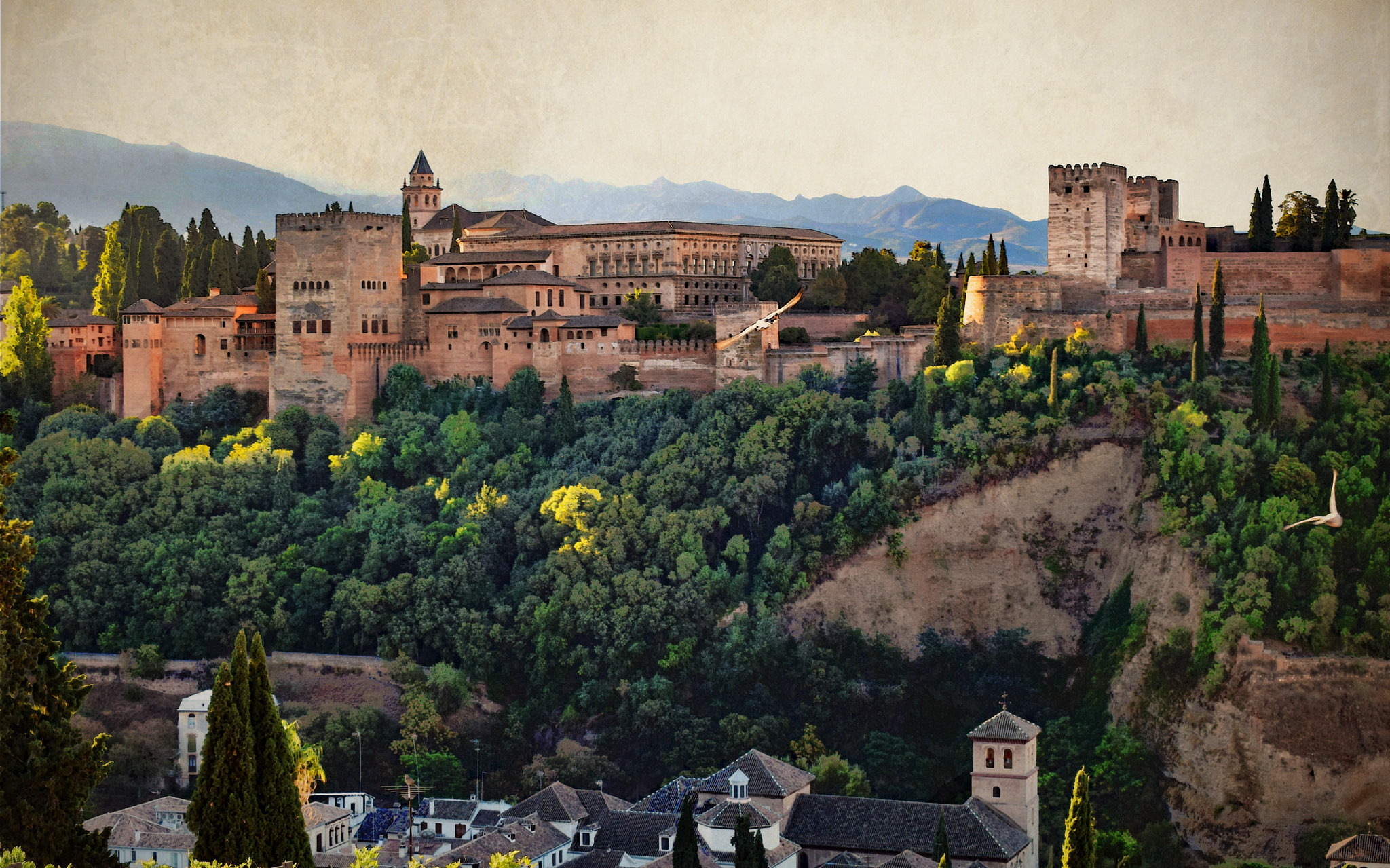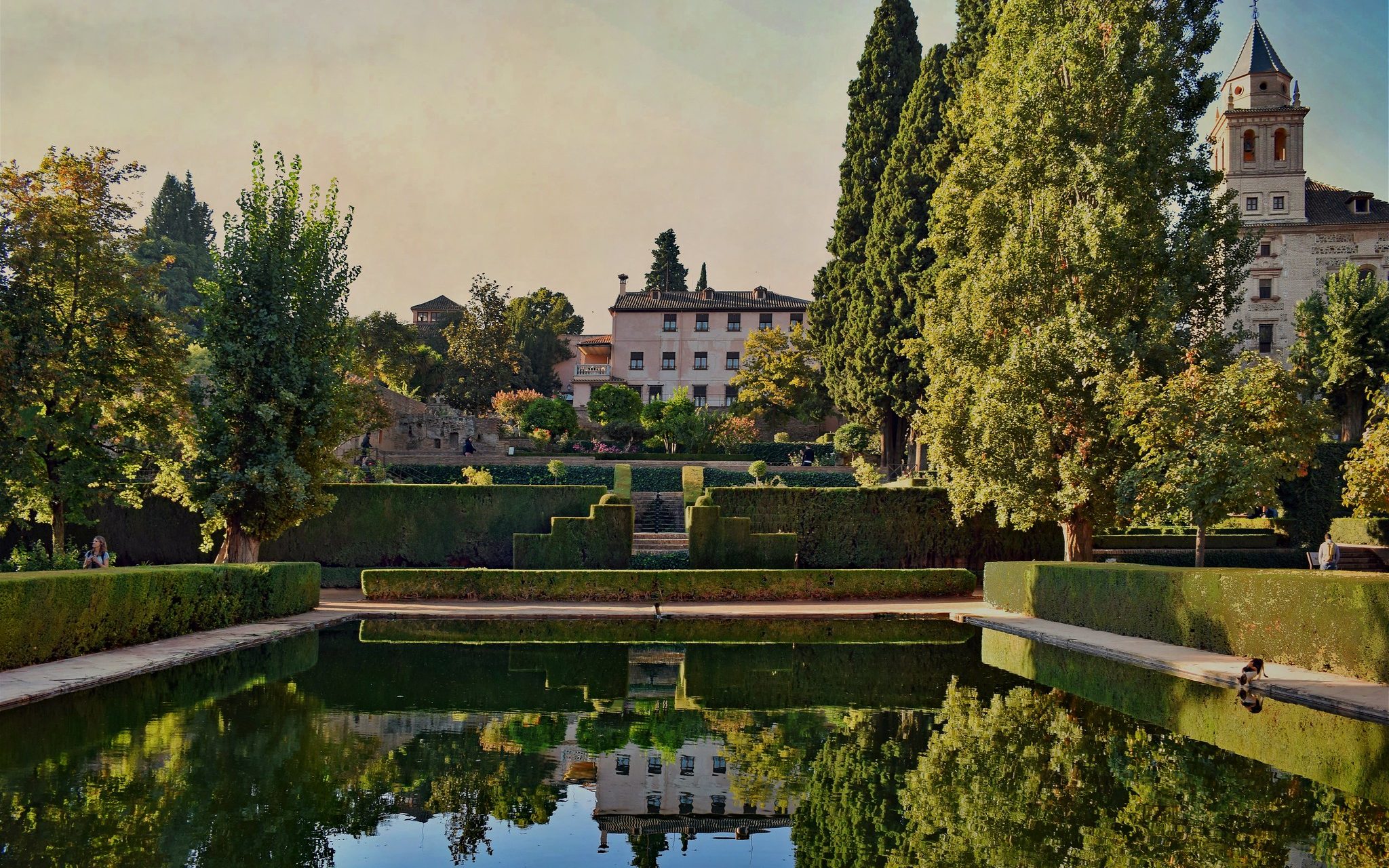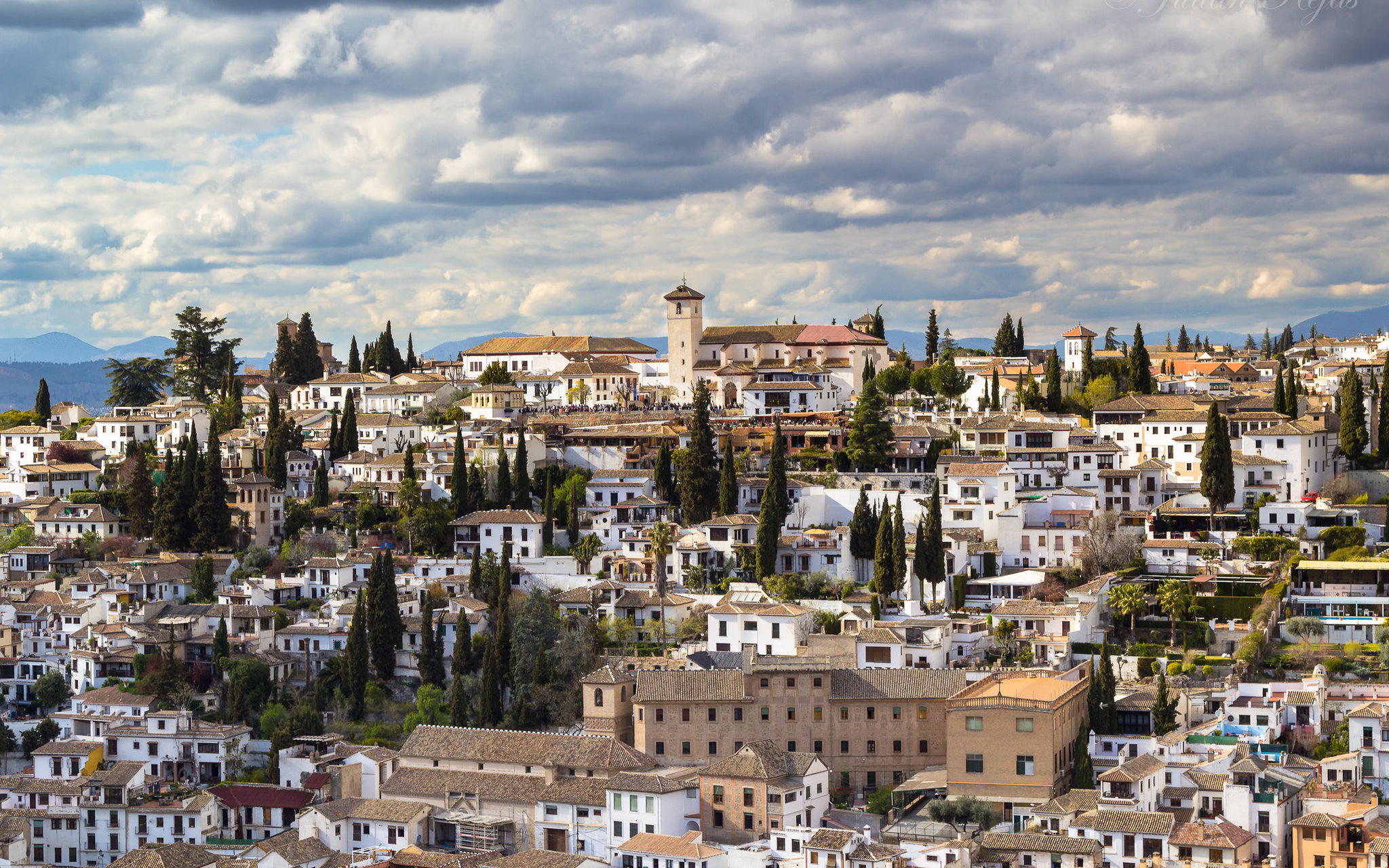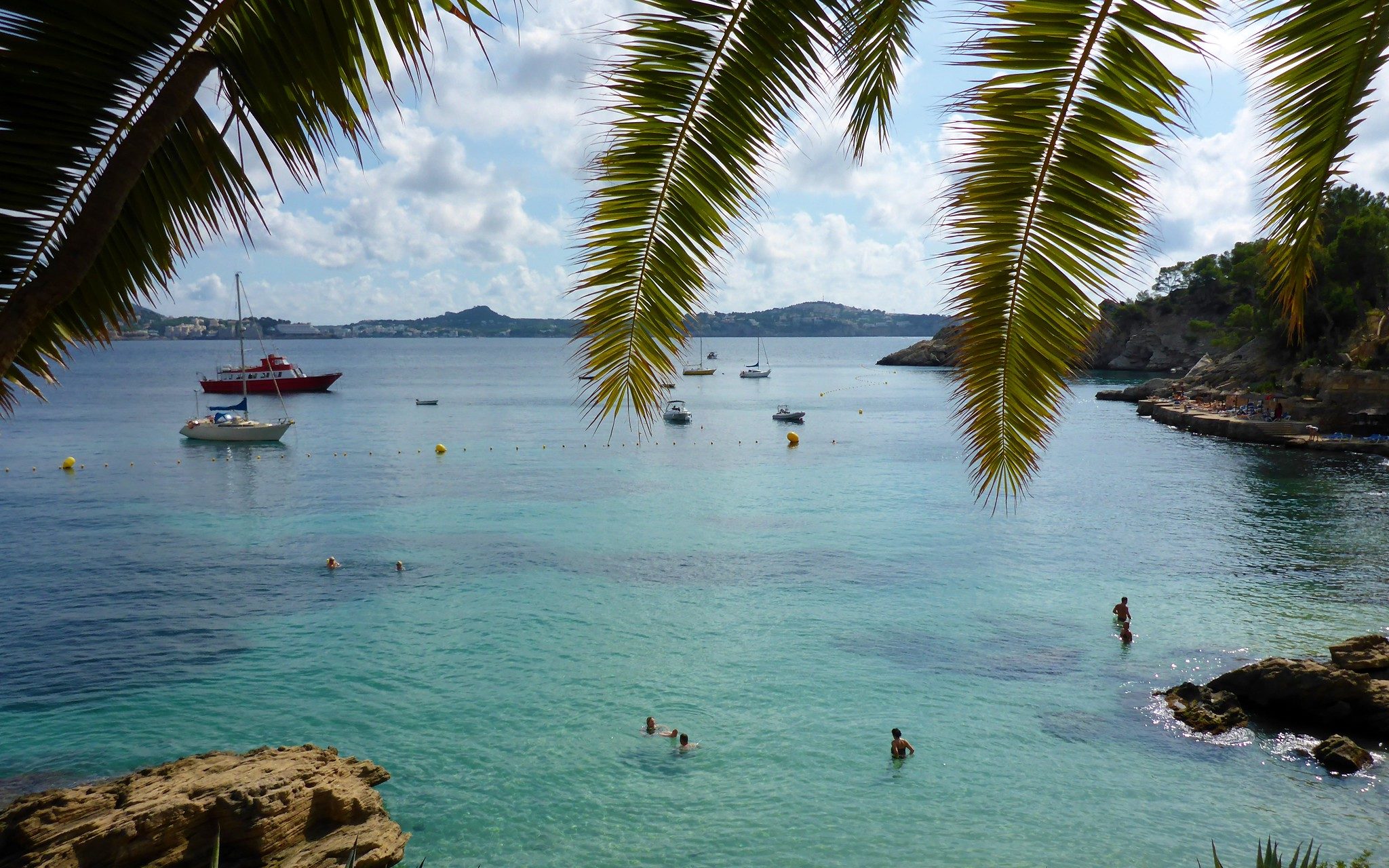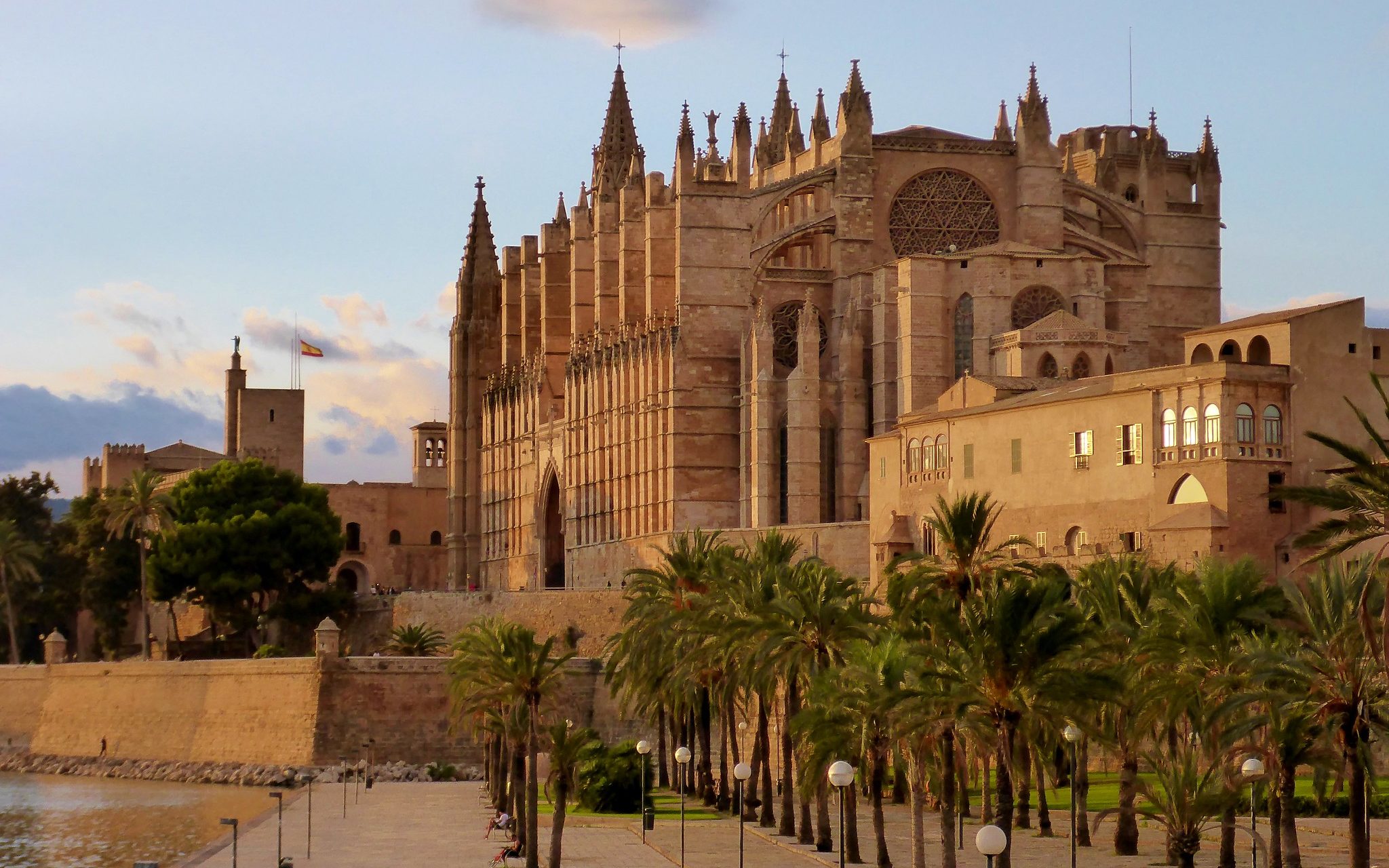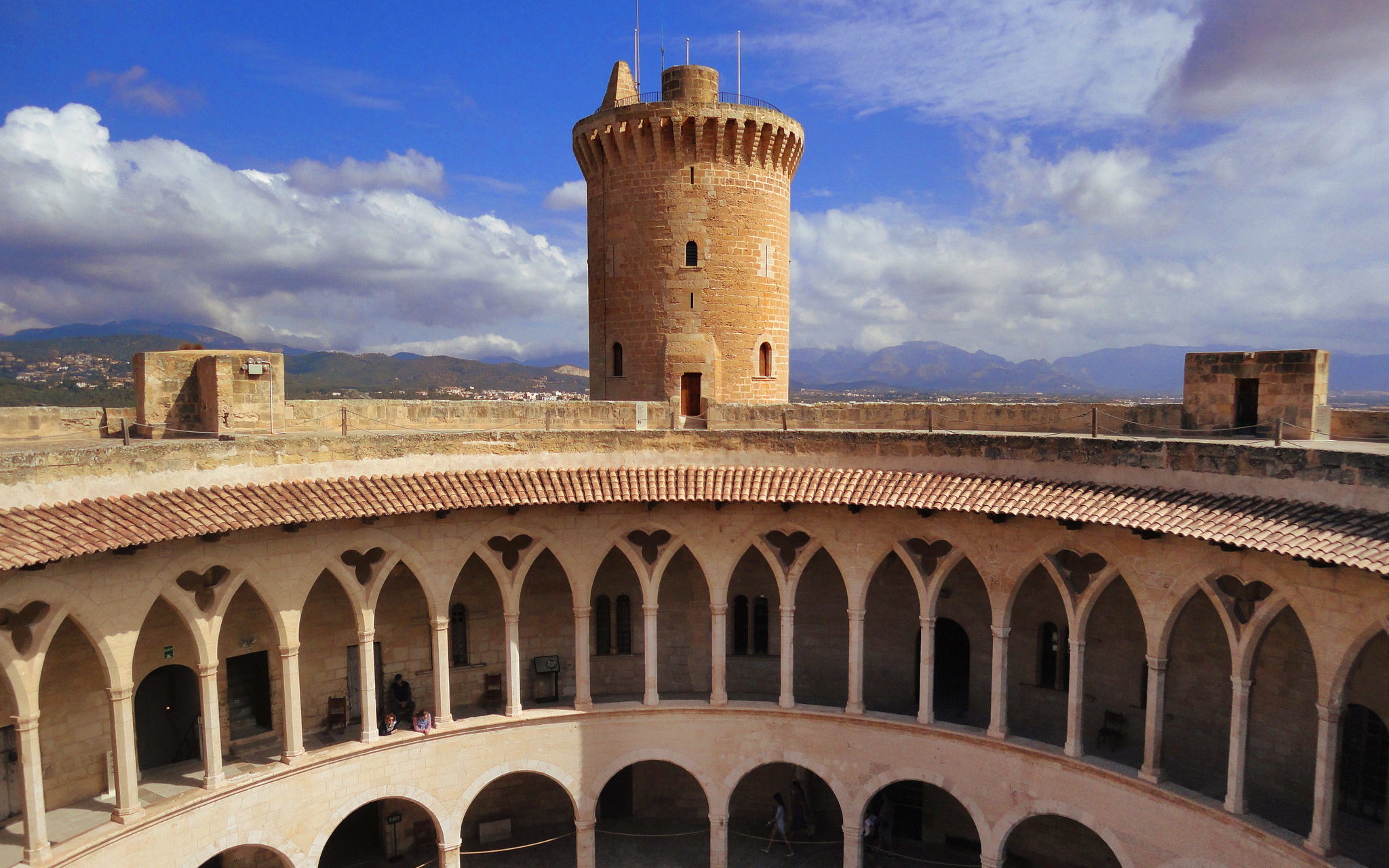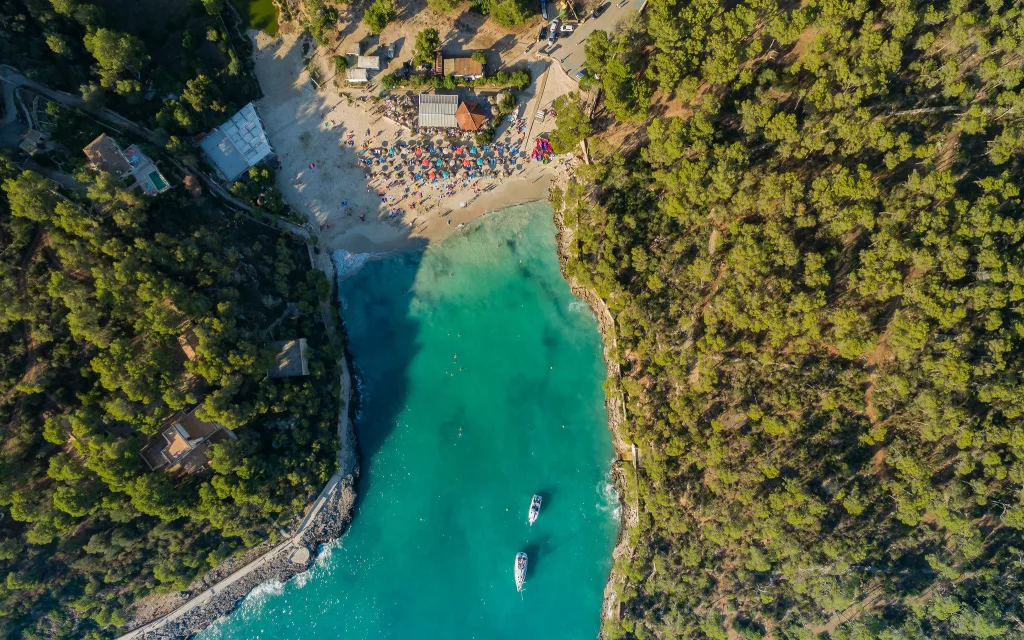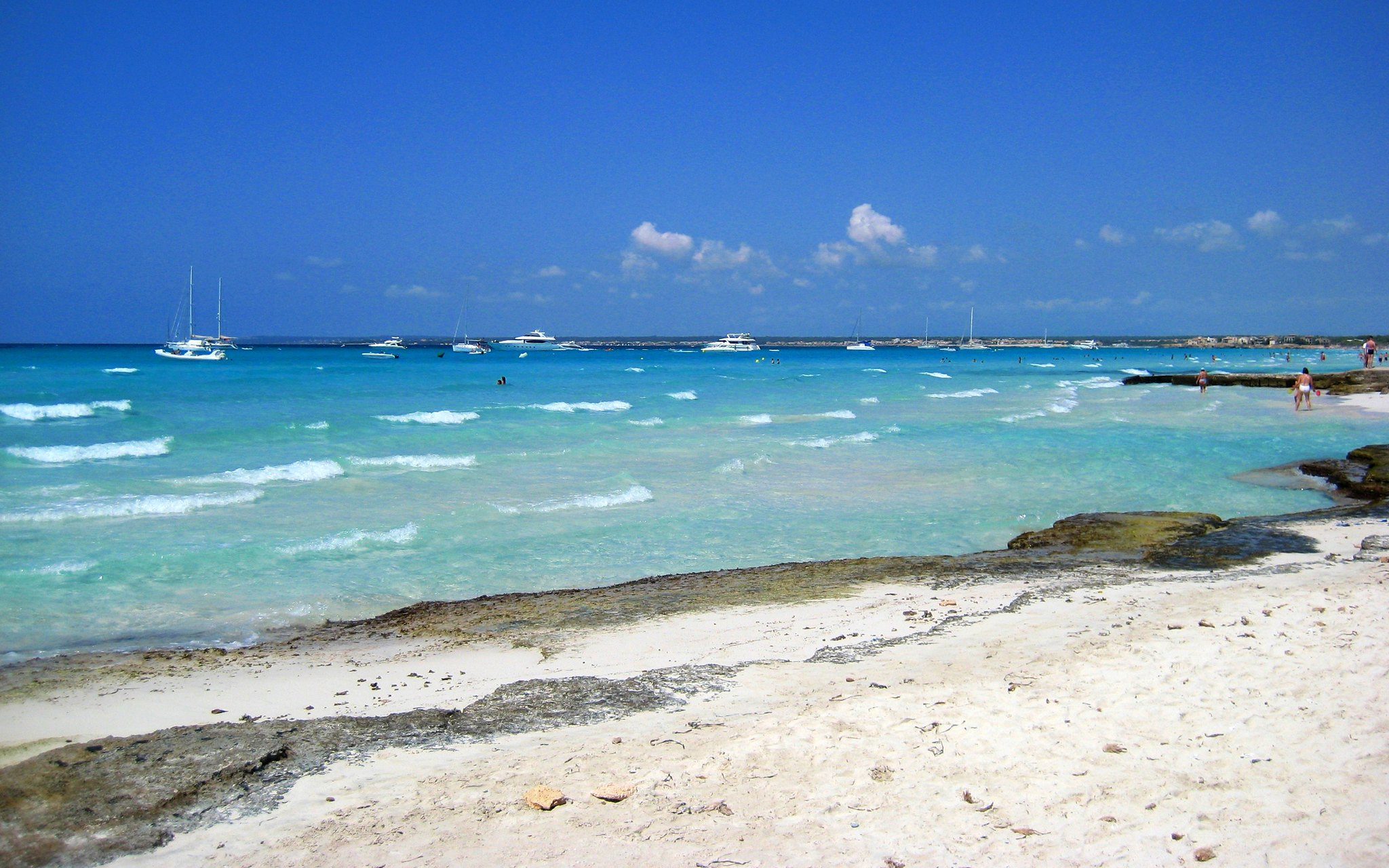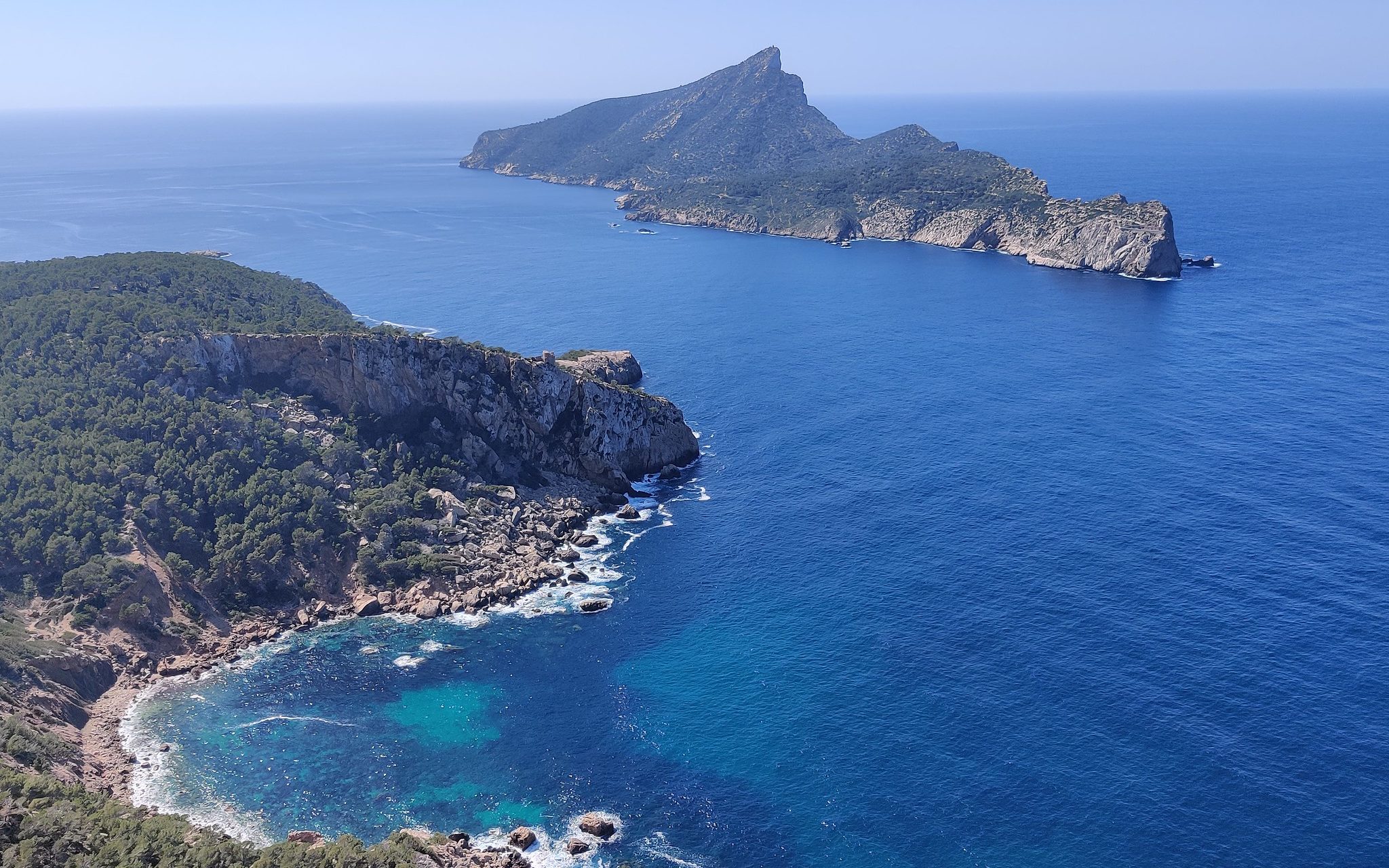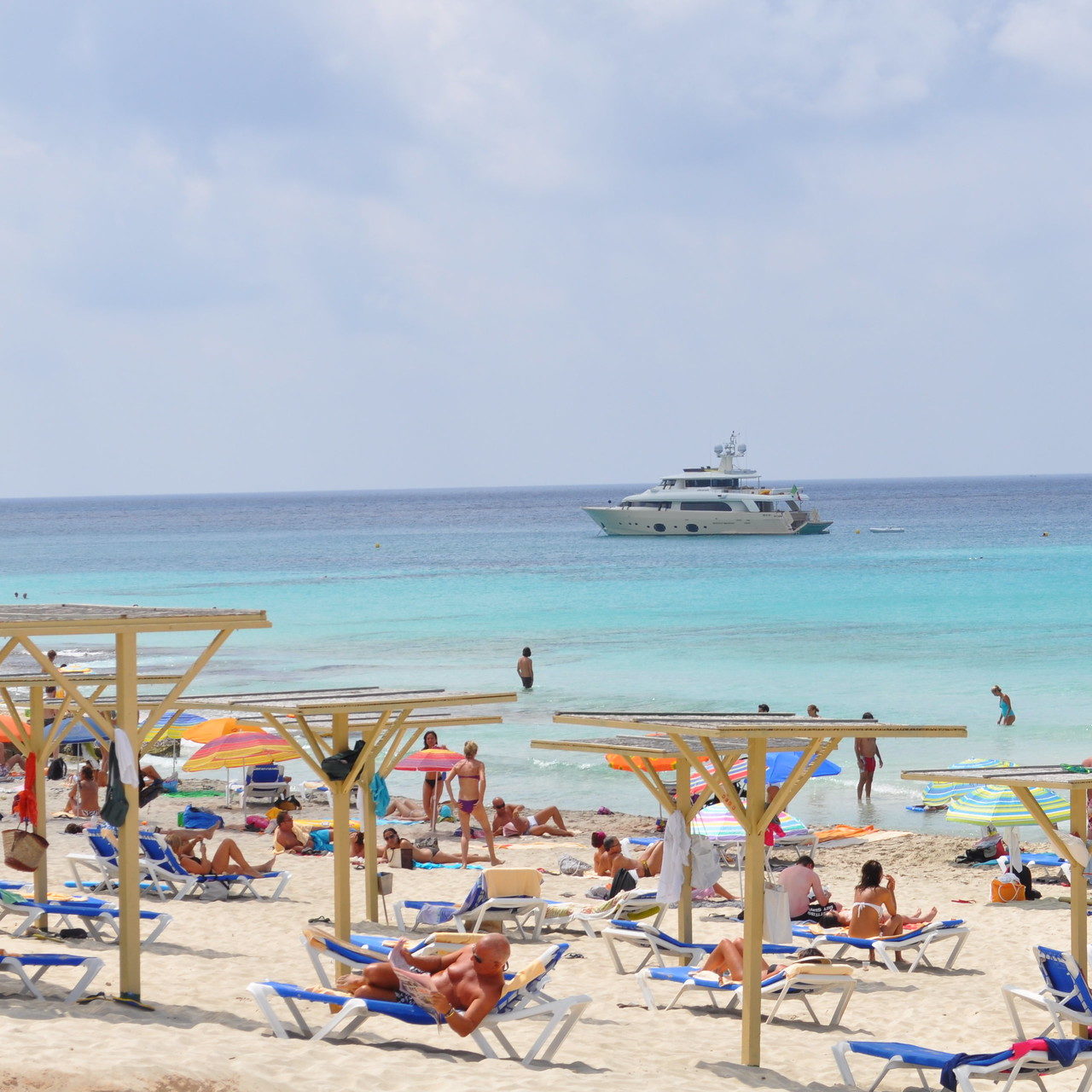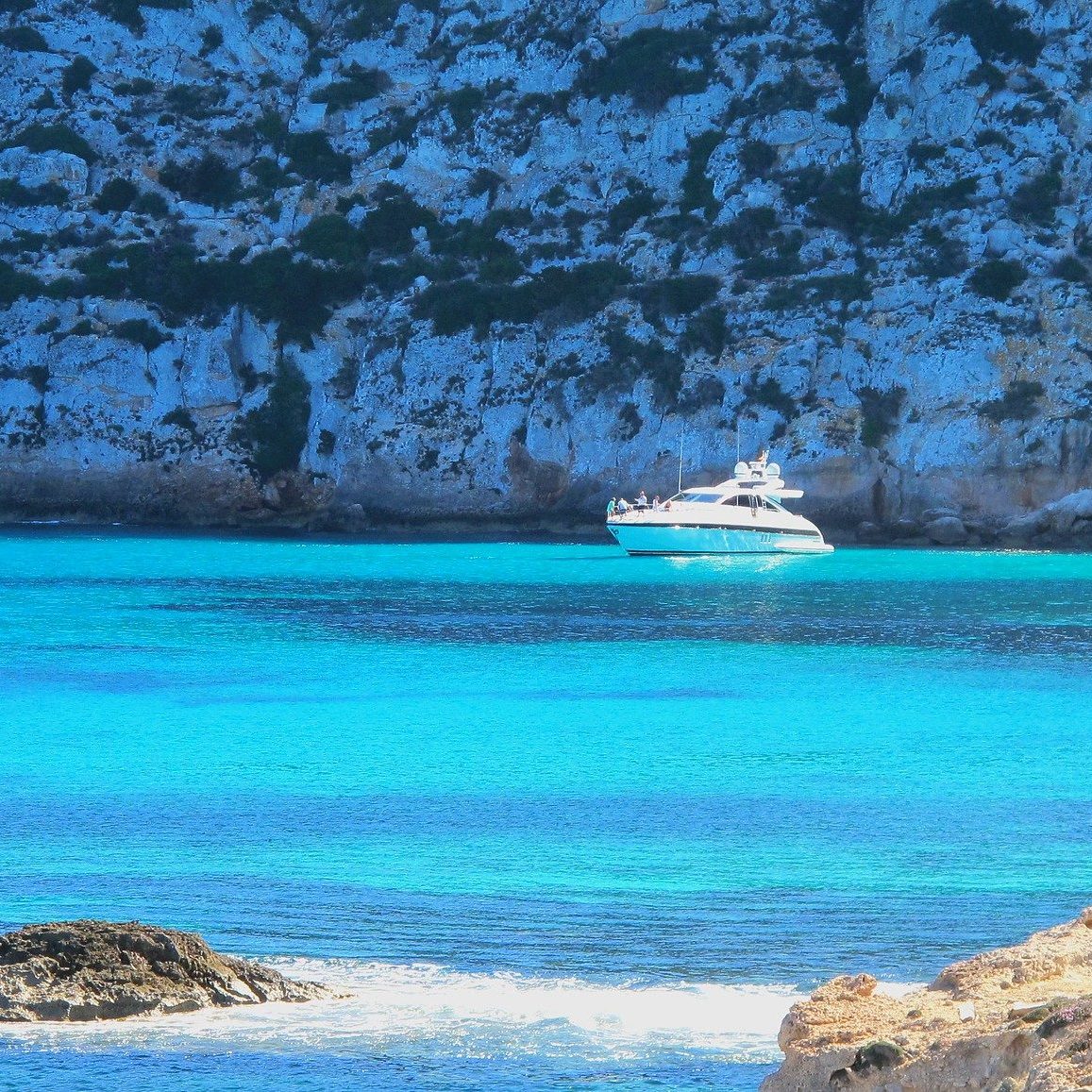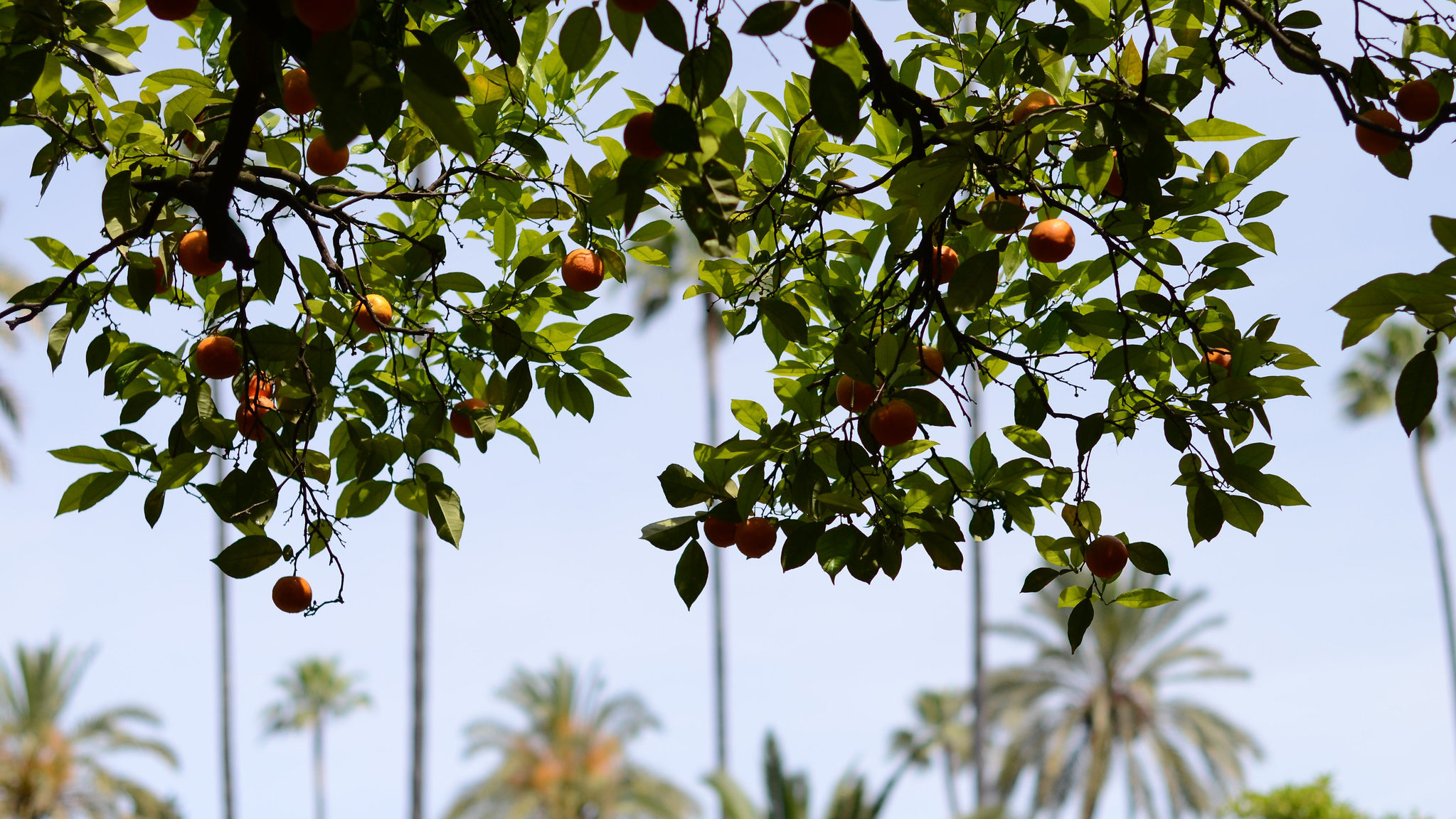
After designing the three itineraries for the region, I feel like an expert on Southern Spain. (I even got into giving advice to people on Reddit.) When creating my two 7-Day Southern Spain Itineraries (see below), I wanted to make those trips meaningful. One focused on significant cultural landmarks, and the other was more of a sporting adventure. This itinerary will mix both while focusing on giving plenty of time to those who want to relax.
Length: 14 full days
Start and End Point: Starts in Seville and ends in Formentera (nearest airport in Ibiza)
Cities: Seville, Cordoba, Granada, Palma de Majorca and Formentera
Sights: Real Alcázar, Mosque-Cathedral of Córdoba, Alhambra, Castell de Bellver
Hikes: Caminito del Rey (Ardales), La Trapa (Palma)
With or without a car: Most of it can be made without a car, using public transport between cities
Best time: Early summer (May and June)
Best suited for: People looking for a trip that balances beautiful historical monuments and days at the beach. People who take pleasure in slow-travel, enjoy the outdoors while being interested in sightseeing.
My active 7-day itinerary departing from Malaga: Ultimate Itinerary for 7 days in Southern Spain
My culture-oriented Itinerary departing from Seville: Itinerary for a Magic 7 Days in Southern Spain
Day 1 – Seville
Seville is a city with so much to see and do. I wouldn’t want to make you wait to see what you came here for. There are 3 buildings part of the UNESCO world heritage: the Alcazar, the Cathedral, and the Archivo General. I suggest you visit at least one of them today. The most lavish is undoubtedly the Real Alcazar. When entering the building, you will be transported back centuries ago. It’s hard not to pull out your camera at every turn to take pictures to put on Instagram. With their towering palm trees, the gardens will make you wonder why life hasn’t made you this domain’s owner.
The Real Alcazar is definitely the day’s highlight. Spend as much time there as you wish; people generally suggest spending 1.5-2 hours visiting. As mentioned earlier, the Cathedral of Seville and Archivo General de Indias could easily be seen along with the Metropol Parasol on this first day. Depending on the person, some will only pass quickly on these attractions.
Archivo General de Indias: This building can be fascinating for some; its special status was awarded for its content more than its exterior. It contains official documents of the West Indies’ explorations and Spanish colonies. (Seville was an important port city in this chapter of history.) The exhibition inside – available in Spanish and English – is sure to be a delight for history buffs.
Metropol Parasol: A great place to lounge hidden from the sun. It also has an archaeological museum, restaurants, bars, and a central market. Open from 9:30 am to midnight.
I suggest you immediately go to the Giralda after visiting the Real Alcazar. It takes about 30 min. (10 going up, 10 admiring the landscape, and 10 going down). You can spend some time looking at the Cathedral afterward if you wish. In my experience, even though I absolutely love Cathedral, I think I would spend at most 10 min. in the Cathedral. Then continue your day as you wish. Explore the small streets of Barrio de Santa Cruz and later return to Metropol Parasol to walk on the walkway and have a magnificent view of the city. The walk away is open from 8 pm to 12 am in the evening. (and from 10 am to 2 pm during the day).
Day 2 – Hiking the Caminito del Rey
Day trip from Seville
On day 2, stretch your legs a bit and leave Seville. Andalusia is known for its large amount of mountainous terrain, and we are going to take advantage of it. The most popular hike in the area is the Caminito Del Rey. This gorgeous path consists of an elevated course inside a narrow gorge; Not recommended for those suffering from vertigo!
You might have seen old pictures of the Caminito and might find the idea of a barrierless sky-high path daunting. The trail used to be quite dangerous but has been completely renovated since 2015: The Caminito del Rey is now 1m wide and has a safety barrier. One of the hike’s highlights is unquestionably its bridge standing 100m above the river. The 7.7 km hike can be completed in 1.5 hours, but it is worth taking your time.
Returning to Seville, end your evening at the Plaza de España and rest after this breathtaking day. Although the Plaza doesn’t have a museum or any particular activity to do, you can admire its marvelous architecture and sumptuous ceramics.
Drive to Ardales from Seville: 2 hours, one way.
Tour: Departs from Seville and brings you back there. Only done on Tuesdays and Fridays. €95.00 for an adult. Their Website
Public transport: 2 hours, one way + one bus. For those wishing to go by train, you’ll need to get first to El Chorro (a small village next to Ardales). From there, take a bus to the beginning of the hike in Ardales.
Day 3 – Visiting Córdoba
Day trip from Seville
Cordoba is, for me, a must in Andalusia, and I refuse that you leave aside this magnificent city. The Roman temple, transformed into a church, converted into a mosque, and changed back into a church, is a marvel of religious architecture, possibly only comparable to the Hagia Sophia in Istanbul. Start your visit to Cordoba by visiting this marvel known as the Mosque–Cathedral of Córdoba. Enter the infinity of its mesmerizing hypostyle hall and let yourself be surprised by the grandeur of the cathedral at its center.
Those interested in visiting a second Alcázar in 3 days of travel can see the Alcázar de los Reyes Cristianos. You should know, however, it has nothing of the splendor of the one in Seville. Instead, visit the old town of Córdoba, which shares the quaintness of some of Seville’s quarters, and take the time to visit the Madinat al-Zahra before returning to the city. Located 7 km from the center of Cordoba, it offers something different from what you have seen before: the ruins of a royal city. It is challenging to get there for those without a car. In that event, I suggest taking a taxi.
Drive from Seville to Córdoba: 1.5 hours, one-way
Train: 48 min, one-way (Operated by Renfe)
Day 4 – Seville
Take advantage of your last day in Seville to do what you want to. Visit some of the attractions you skipped previously. Otherwise, consider going to the Old town quarter of El Arenal. You’ll find the Torre del Oro, a military watchtower with a small naval museum inside, complementing your visit to the city’s landmark. If you’re an art fan, I’m sure you’ll find what you’re looking for at Museo De Bellas Artes De Sevilla. The Hospital de los Venerables, right beside the main attractions, focuses on the works of the great Spanish painter Diego Velázquez.
Day 4 is also the perfect day for couples to go on a tapas food tour or visit the Pearl of Andalusia by bike. The Aquarium of Seville and the Plaza de Toros are suitable activities for families. Seville is also teeming with flamenco classes, cooking classes, and spas. This day is entirely yours.
(My vote would go for the Plaza de Toros or the Seville Museum of Fine Arts.)
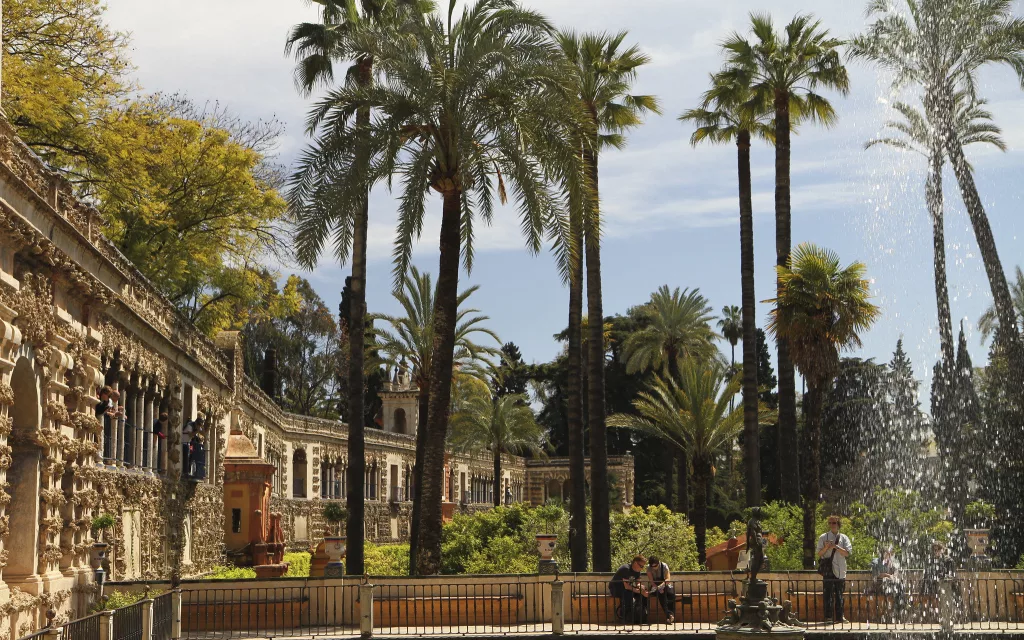

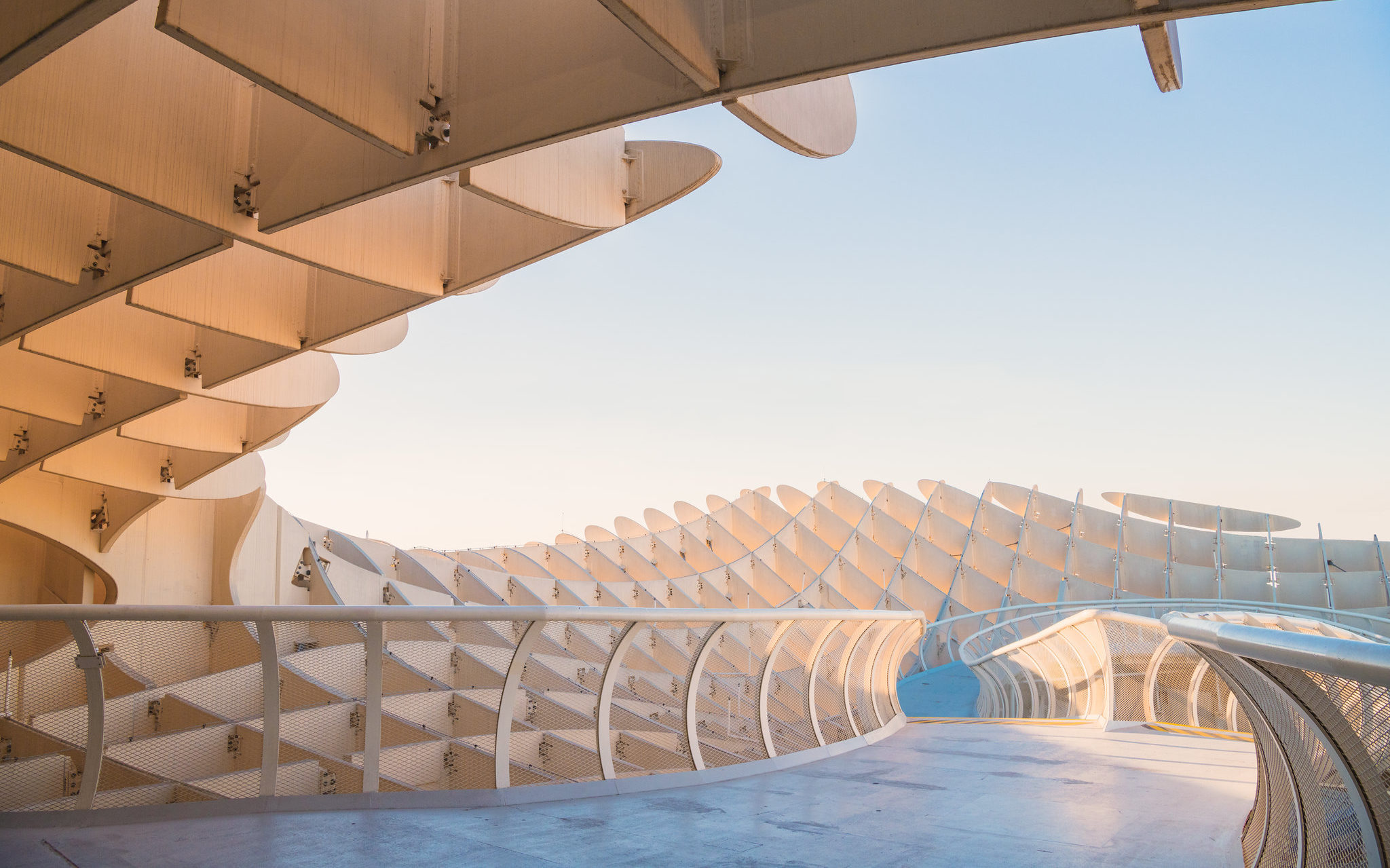
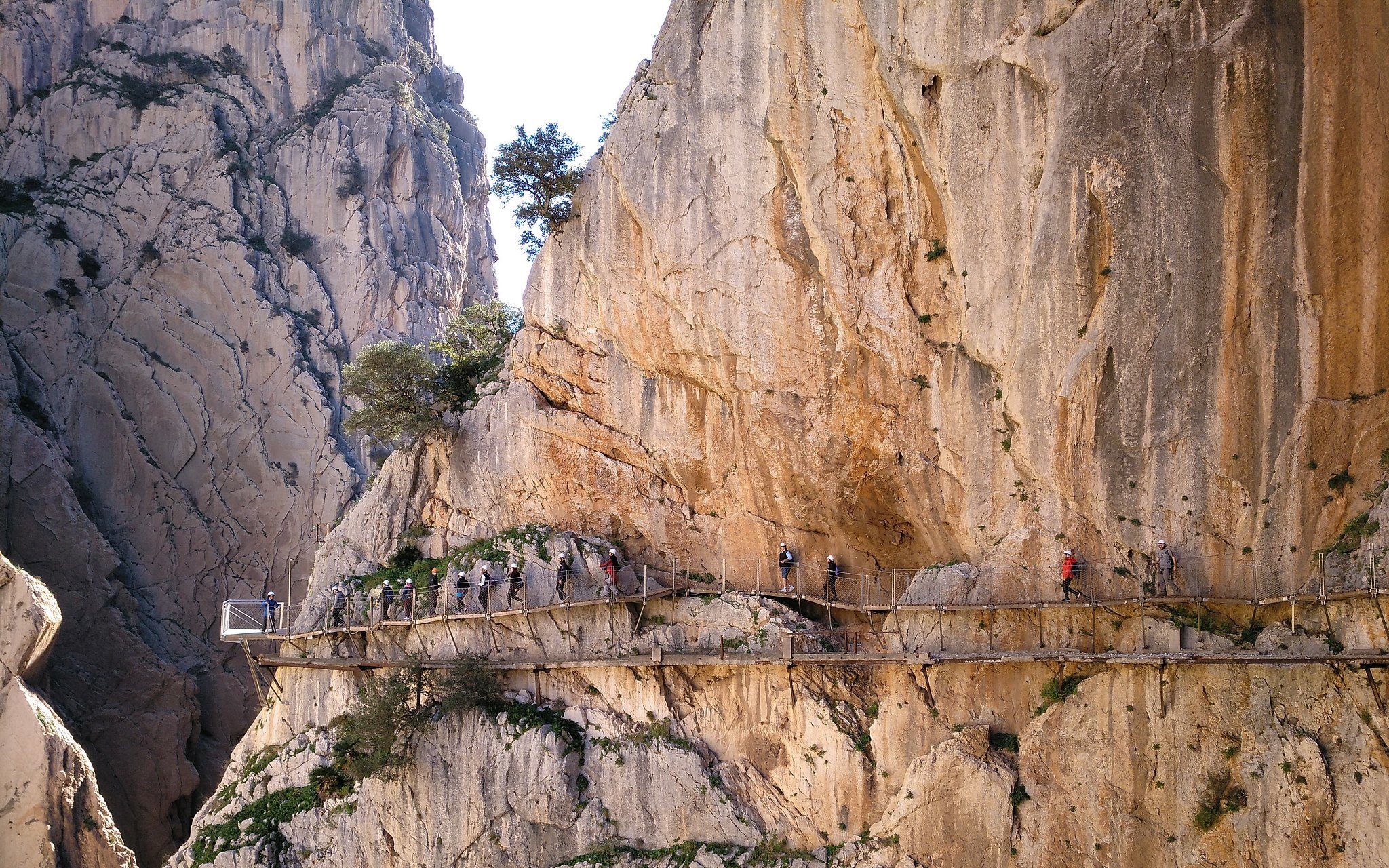

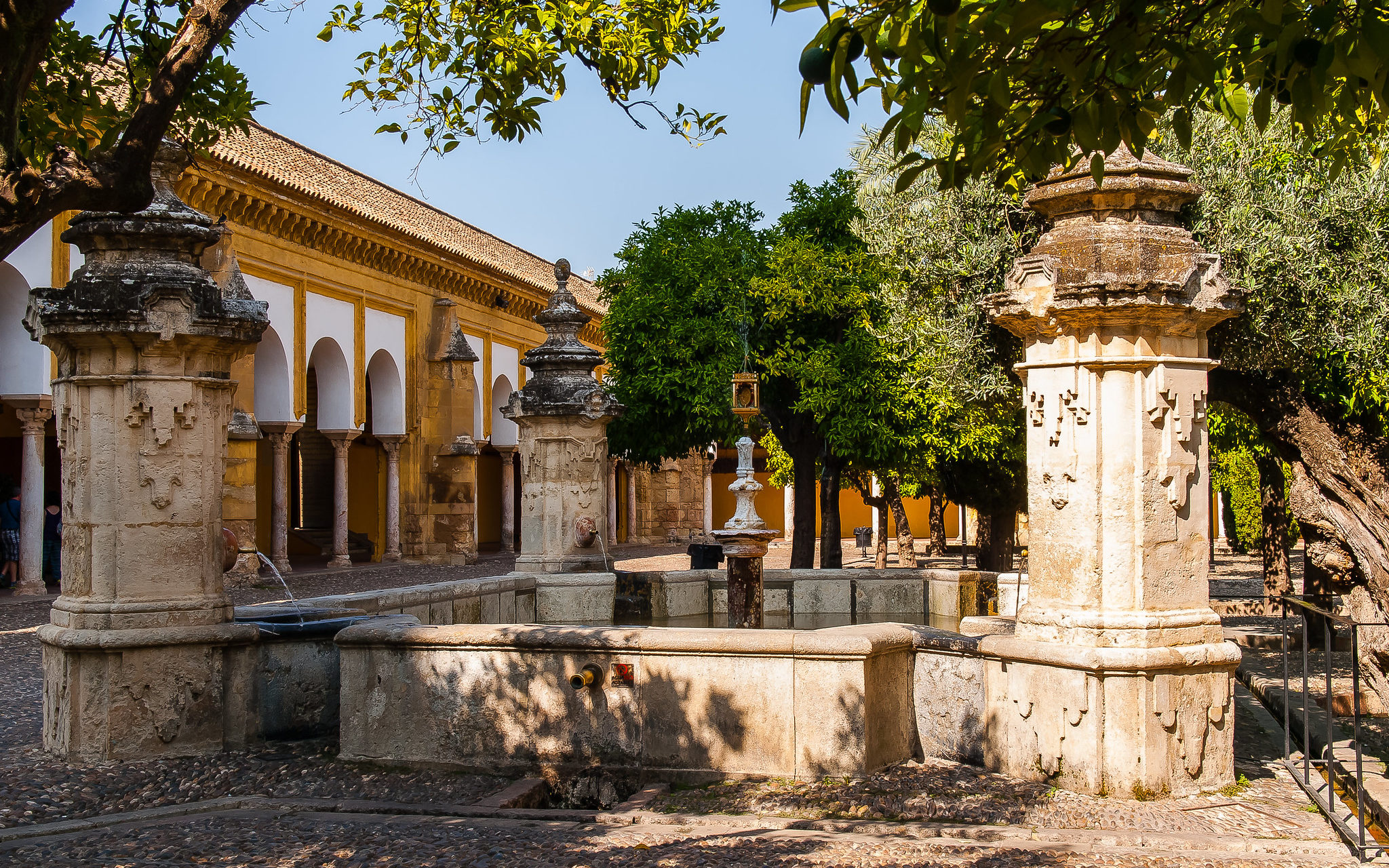
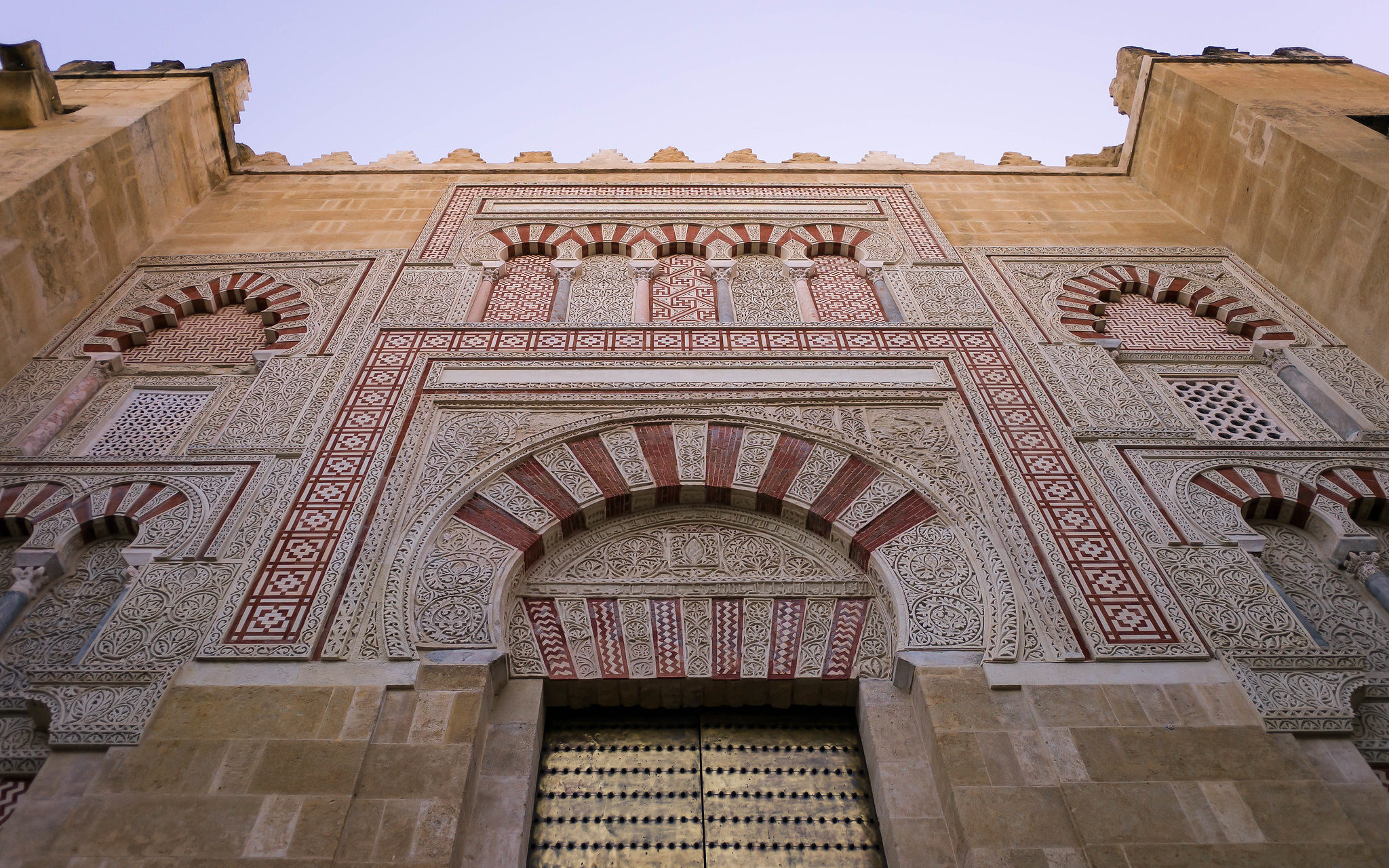
Where to stay in Seville?
Hotel suggestion: Boutique Hotel Casa del Poeta
Neighbourhood suggestion: Barrio de Santa Cruz
Read more: A Genuine Summary of Seville’s Best Neighbourhoods
Day 5 – Exploring Granada
Pack up your bags and leave Seville for good. Next stop: Granada.
You will see that among my 3 itineraries in Andalusia, the only element that is common to the 3 is the city of Granada. The Alhambra is the crown jewel when traveling in Southern Spain and should be part of any good itinerary. When I see the castle inside the Alhambra, I can’t help but think of the thousand and one nights. (I’m sorry if the only medieval Arab/Islamic palace still intact doesn’t appeal to you. I advise you to find other things to do in the next 2 days.)
A visit to Granada is more about the wonders around us than actively doing things. We will start our day here by exploring Albayzin, the old quarter of the Moors. Later, go to the magnificent Mirador de San Nicolas and take some time to admire the castle. Finally, explore the Sacromonte district, whose caves can surprise visitors with their hidden flamenco performances.
Drive to Granada from Sevilla: 2,5 hours
Train: 2,5 hours (Operated by Renfe)
(Those who don’t like sightseeing, see my active itinerary for a more dynamic visit of Granada)
Day 6 – Visiting the Alhambra in Granada
The Alhambra is made up of 3 main parts:
- The Nasrid Palaces: The primary residence. It is usually considered the masterpiece of the complex.
- The Generalife: The summer palace and its gardens. It is another favorite and a must-see depending on the season.
- The Alcazaba: The fortress. It is the “least interesting” portion of the 3, but still worth a visit if you have more time.
What is essential to know about the Alhambra is that it is vital to book your tickets in advance to avoid having to find another way to enter. (I covered hose other ways here.) The best time to visit during the day is in the morning; however, there are other options than a day visit! It is also possible to see the Nasrid Palaces and the Generalife gardens at night. These two experiences are separate tickets and include different things. For example, visiting the Nasrid Palaces at night provides access to the other 2 parts of the Alhambra the next day, while visiting the gardens at night doesn’t include access to other parts of the complex.
The Nasrid Palaces are exceptional in their diversity. When visiting the Alhambra, remember to pay special attention to the ceilings of the rooms; each one is different and exquisite in its own way. Come summer, the Generalife gardens are absolutely majestic and will not only delight your eyes; the flowering trees’ scents will also enchant you.
Day 7 – Flying to Palma de Mallorca
On day 7, depart Granada Today and fly to exotic Palma de Mallorca. Palma is the capital of Mallorca and the largest city in the Balearic Islands. It perfectly balances a magnificent historic center and seaside opportunities. Enjoying your first evening in Palma by simply exploring the city.
Flight from Granada to Palma: 1 hour 15 min., non-stop flight. Vueling generally operates a flight in the early afternoon. It’s perfect for leaving your hotel without being rushed in the morning in Granada.
Day 8 – Palma de Mallorca
The city of Palma has two remarkable landmarks. The first is the Cathedral of Santa Maria of Palma (most commonly known as La Seu). This imposing gothic cathedral is an emblem of the city and can easily be admired while walking in the Old Town. To see the second monument, you’ll have to go a bit farther; After having enjoyed Palma’s Old Town, leave the city and go to Castell de Bellver. This circular castle, one of the few in Europe, is located 3 km from the center of Palma. Inside is a museum of the history of the city.
Continue your way to the west of Mallorca to get to Cala Comtessa. Located 15 min. from Palma, this idyllic little beach, although very crowded, will give you a quick taste of the Balearic adventure of the days to come.
Aquariums are always a great activity for families. Since wildlife changes as you move around the globe, kids always have new fish to discover. Children (and sea lovers) will find what they are looking for at the Palma Aquarium.
Travelers without children can go to the Passeig des Born and the Mercat de l’Olivar. Although it only fills a portion of the day, they are among the locals’ favorite places and are well worth a look.
Day 9 – Discovering Mallorca’s East Coast
On day 9, you’ll visit the east of the island of Mallorca. Start by going to Felanitx, a charming inland town of Mallorca offering breathtaking views of the island. The small town is famous for its vineyards and will undoubtedly warrant a stop for wine enthusiasts.
Afterward, enjoy the rest of your day lying on the beach. The east coast of Mallorca is full of beautiful beaches, which are more or less frequented by travelers. Cala s’Almunia and Cala des Moro stand out for the purity of the blue of their water.
On the other hand, Cala Mondragó and Cala Llombards are not only beautiful for turquoise bay; they also offer a marvelous landscape. A trip to the largest Balearic island would not be complete without at least considering going to Es Trenc. This 2 km long beach, part of the Es Trenc-Salobrar Natural Park, is one of the most famous in Mallorca.
Drive to Felanitx: 50 min, one-way
Public transport: 1 hour (Operated by Barcelona Transport)
Day 10 – Mallorca’s West Coast
For this third day in Mallorca, you will have two options depending on your interests.
Option #1: Travel to the west coast of Mallorca to hike the La Trapa Ruin Loop. This 7.6-km loop trail takes about 2,5 hours to complete, and although it might seem steep, it is only of moderate difficulty. (Note that it is strongly recommended to do this path clockwise.) This hike offers impregnable vistas of the Mediterranean sea and the Sa Dragonera island. The ruins of a Trappist monastery can also be observed in a few places along the way. This excursion can be combined with a stop in Palmanova. The resort town has 3 pretty beaches that will satisfy your post-hiking cravings.
Option #2: Visit the Coves del Drac (Their Website) in the eastern part of Mallorca and visit a few more of the dozens of beaches that populate the island’s east coast.
Day 11 – Formentera
Formentera is my Zanzibar. This is the destination you might not get out of your way to visit, but that is not to be missed if you’re in the area. Since you are staying in the Balearic Islands for the second half of this trip, the paradisiacal beaches and the peacefulness of Formentera will appeal to those tired of Mallorca’s crowds.
Boat to Formentera: 5 hours, one-way (Operated by Balearia) The ship usually operates in the morning, leaving you the rest of the day on the idyllic island.
Flight: If you’re the type of person who gets easily seasick, it’s possible to go to Ibiza by plane and take a short boat ride to Formentera.
You’re not interested in this itinerary, but want to go to Formentera?
How to Travel to Formentera and its Azure Coasts
Day 12 to 14 – Formentera
Life on Formentera is easy. Go to the beach, read, eat seafood, sleep, repeat. Hire a moped or an e-bike and enjoy the rest of your trip. Here is a list of lovely beaches to see during your days here. (I’m sure you could find them without me; the island isn’t that big anyways.)
- Es Cap de Barbaria
- Calo Des Mort
- Platja Es Arenals
- Playa de Ses Illetes
- Platja de Llevant
- Platja de Migjorn
- S’Espalmador
Getting back home: Fortunately, Formentera does not have an airport. (Being able to fly directly in Formentera would immediately make the island immensely popular.) Take the 30 min ferry to Ibiza. There are more than 30 ferries a day! Return home from Ibiza airport.
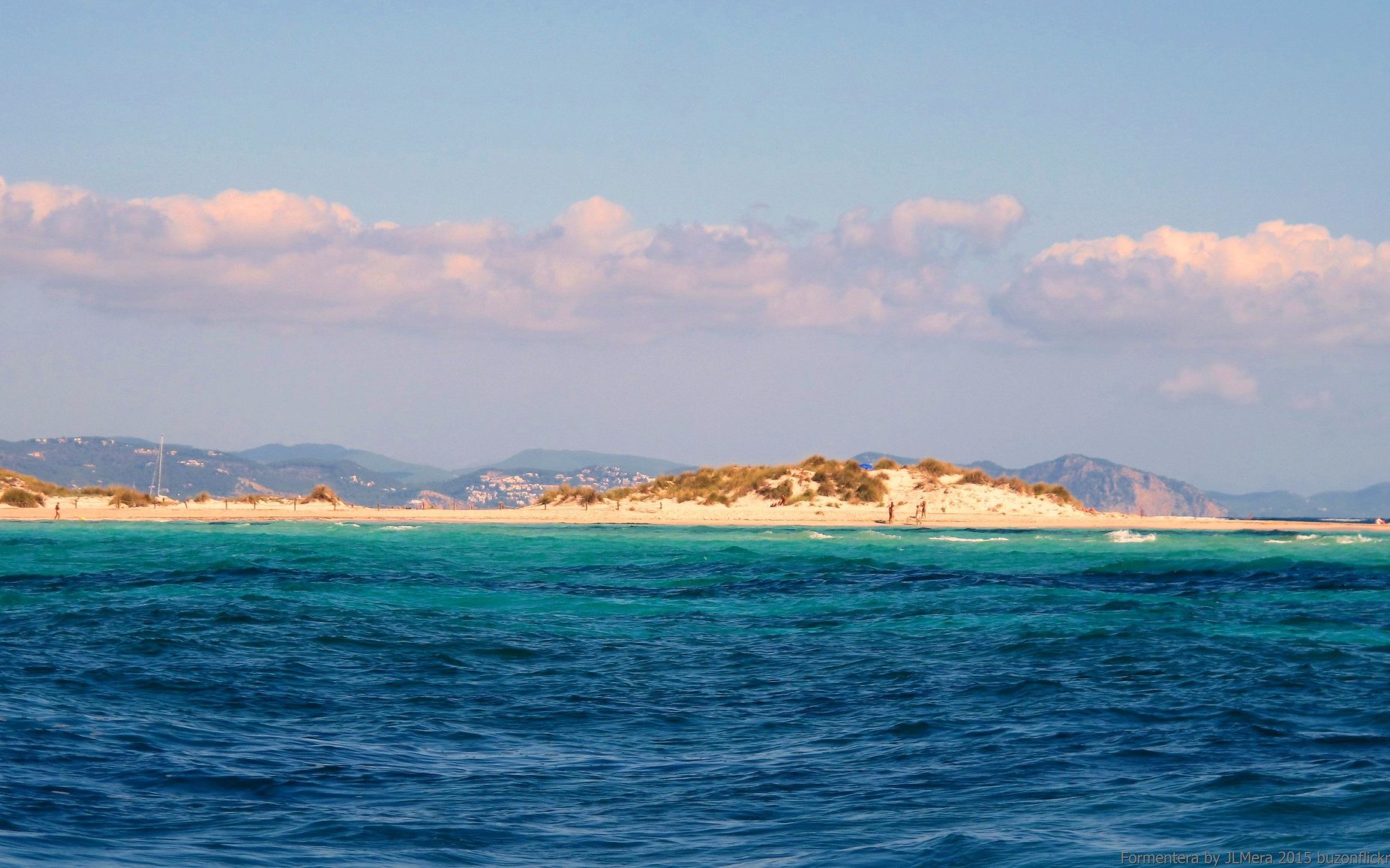
If you want to spend the night before your flight in Ibiza (or skip Formentera altogether), you might be interested in this article: What are the Best Places to Stay in Lavish Ibiza?
Where to Start and End Your Trip in Southern Spain
This fabulous itinerary takes you to the most wonderful places in Spain, from the jewels of the South to the glorious beaches of the Balearic Islands. If you wish to follow the itinerary above, you will have to flight into Seville and out of Ibiza Airport.
However, there are other options. There are overall 5 airports in Andalusia (Malaga, Seville, Almeria, Granada and Jerez) as well as 3 airports in the isles (Ibiza, Menorca and Palma de Mallorca). A popular option is to start your trip in Seville and finish in Malaga, so you don’t have to loose time going back North. This means you’ll need to book an open jaw/multi-city flight. Depending on the search engine, those flights are sometimes a little more tricky to book you use, but this is easily resolved if you call the airline.
It’s always an option to fly in and out of the same city. You only have to plan your trip accordingly; and save some time at the end of your trip to go back to where you started.
Should you rent a car in Southern Spain?
The question of renting or not renting a car always depends on a few factors: Is the train/bus system adequate in this part of the country? Do you want to go off the beaten path?
In the case of this 2 weeks itinerary, the part in Andalusia easily can be done solely with public transport. You won’t need a car in Seville, Cordoba or Granada. The only place that might truly warrant a rental car is the Caminito del Rey. I, personally, have never rented a car in Spain and when even the bus isn’t convenient, I opt for a scooter or ride share via BlaBlaCar. However, those who want to explore the white hill towns that make Andalusia famous, shoud probably consider renting a car for a few days.
Check prices and book on Kayak, it has been my go-to rental car company for the last few years and we never had a problem.
What about renting a car on Palma de Mallorca?
To explore the Balearic Islands, you could easily get away with just renting one scooter in the main town.
In summary
| Visit | Wake up in | Sleep in | |
| Day 1 | Seville | Seville | Seville |
| Day 2 | Caminito del Rey | Seville | Seville |
| Day 3 | Cordoba | Seville | Seville |
| Day 4 | Seville | Seville | Seville |
| Day 5 | Granada | Seville | Granada |
| Day 6 | Granada | Granada | Granada |
| Day 7 | Flight to Palma de Mallorca | Granada | Palma |
| Day 8 | Palma de Mallorca | Palma | Palma |
| Day 9 | Mallorca’s East Coast | Palma | Palma |
| Day 10 | Mallorca’s West Coast | Palma | Palma |
| Day 11 | Ferry to Formentera | Palma | Formentera |
| Day 12 | Formentera | Formentera | Formentera |
| Day 13 | Formentera | Formentera | Formentera |
| Day 14 | Formentera | Formentera | Formentera |

